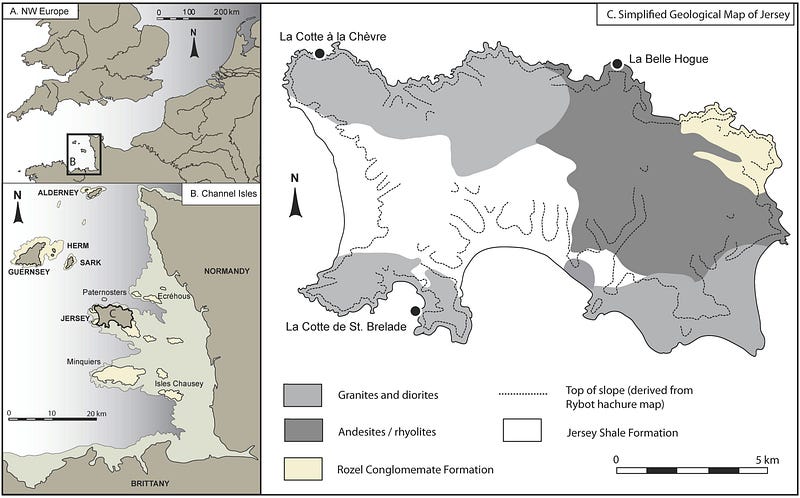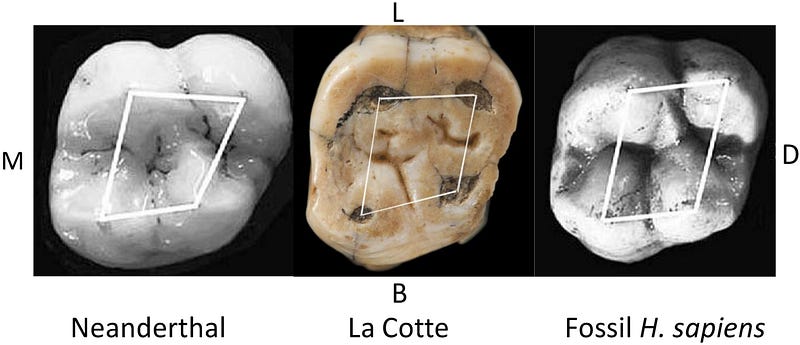What If Neanderthals Had Survived? Exploring Dual Ancestry
Written on
Chapter 1: The Neanderthal Puzzle
The notion of Neanderthals not going extinct prompts fascinating inquiries. This article delves into the complexities of classifying certain fossil specimens within specific species. Notably, the morphological similarities between Neanderthals and early Homo sapiens, particularly concerning dental structures, warrant further exploration.
The La Cotte de St. Brelade site, located on Jersey in the English Channel, yielded thirteen permanent teeth during excavations in the early 20th century. This significant Paleolithic site, inhabited by Neanderthals from approximately 250,000 to 48,000 years ago, revealed these teeth near a hearth associated with the Mousterian culture. Initially classified as Neanderthal, later findings, including an occipital bone fragment dated to less than 48,000 years old, prompted scientists to reassess these findings for a clearer morphological classification.
One of the teeth has been lost, and another was identified as ‘non-hominid.’ The remaining specimens likely belong to two adults, yet their cervix shape and the absence of common Neanderthal features suggest closer resemblance to Homo sapiens. However, aspects of the crown and root morphology indicate Neanderthal characteristics.

Section 1.1: Implications of Dual Ancestry
What do these findings imply? The evidence suggests a complex ancestry involving both Neanderthals and Homo sapiens. This interbreeding, occurring around 100,000 years ago in the Middle East and beyond, complicates the narrative of Neanderthal extinction. The dental findings date back to approximately 48,000 years ago, coinciding with the time frame of the Neanderthals' suspected extinction.
Subsection 1.1.1: Speculative Thoughts on Survival
Transitioning from objective analysis to speculation, project leader Chris Stringer emphasizes the notable similarities between Neanderthals and Homo sapiens, both genetically and morphologically. He raises a critical question: Can we genuinely refer to the Neanderthal as having gone extinct? Upcoming studies, particularly those analyzing DNA extracted from the teeth, could shed light on whether we are dealing with distinct species or a hybrid population, with Neanderthals being gradually integrated into the larger Homo sapiens gene pool.

Section 1.2: The Future of Neanderthal Research
As we ponder the question of Neanderthal extinction, future research will be pivotal in uncovering these ancient mysteries.
Chapter 2: Exploring Alternative Histories
The first video titled "What If the Neanderthals Had Not Gone Extinct?" delves into the hypothetical consequences of Neanderthals surviving alongside early humans, discussing potential cultural and genetic implications.
The second video, "What if Neanderthals Didn't Go Extinct?" further examines the various scenarios that could have unfolded had Neanderthals persisted, offering insights into the evolutionary narrative.